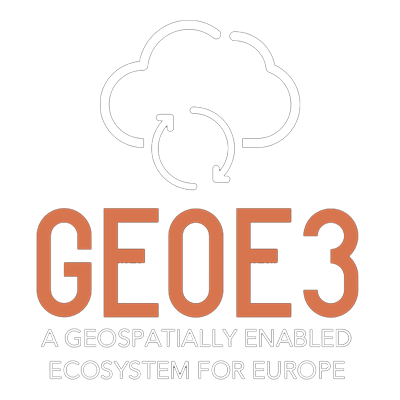In 2022 Camille Cossec and I carried out user interviews to collect feedback on the draft GeoE3 service infrastructure and other work in progress. The interviews focused on users working in the solar energy potential and energy efficiency domain. We successfully found a handful users to be interviewed with the help of the networks of the project partners. In this blog, I will tell you in detail what the users had in mind.
All users that were interviewed work for small companies in the solar energy industry and had either experience using Geographical Information Systems (GIS), Application Programming Interfaces (APIs) or both. To gather feedback, the GeoE3 platform https://geoe3platform.eu/geoe3/, a video explaining how to use it, mock-up images and a PowerPoint presentation explaining the goals of the project and a set of predefined questions were used. All users that were interviewed had watched the video and navigated through the platform in advance.
User experiences
Overall, the users found the project’s objectives and deliverables (platform, APIs, services) very relevant, and the platform, APIs and data provided useful. They also thought that the GeoE3 platform is comfortable and intuitive to use. Watching the video beforehand is likely to have helped the users in understanding the platform and how to use it.
The level of enthusiasm for the API services provided correlated with the level of previous experience using APIs. The most experienced user with lots of experience saw a clear cost-saving potential in using the APIs to gather data that they are currently producing and calculating themselves for example using drones and AI processing. The same user proposed to the project to produce “APIs for dummies” guidelines to lower new users’ barriers.
More specific information about the data
On a general level, the users were happy with the existing data content. There were however different views on if the data provided and its description are sufficient.
All users interviewed said that for the energy sector in general, it would be useful to also have access to the energy rating of buildings (A, B, C, D, …), as it tells how energy is consumed by a building. This information was included for Finland, but not for the other countries during the time of the interviews. In addition, it was also brought forward that for solar projects temperature and wind speed information would be useful for countries for which these were missing. Also, some other additional data to be added were suggested based on more specific use cases.
One of the users said that it is critical to know more about the data to be able to evaluate its fit-for-purpose. There is for example a need to know the name of the data producer, data units, possible standards used in data production, data licensing, how the weather information has been measured and how the original datasets have been further processed by the project, for example to produce the solar energy potential and weather layers.
Recommendations for the developments
Based on the interviews we were able to give the following recommendations to consider in further project activities:
- Create an “APIs for dummies guidance” package to lower the barrier for new users of APIs. In the newly launched Location Innovation Academy, there is a lot of information about different APIs, especially the OGC API standards.
- Provide the metadata of the source data. Basically, this is available from https://data.europa.eu/en but not currently linked to the website.
- Describe and make available descriptions of how source data have been further processed by the project.
- Improve the scale bar so that it shows units and minimum and maximum values when visualising numeric data in a particular area.
- Make efforts to include weather information for all participating countries.
- Include energy certificate information (at least ratings) for all countries, if possible.
- Make improvements to the weather information available by adding daily or monthly averages and showing it on a slide bar in the platform.
- Engage users in the project somehow to create an iterative feedback process and to ensure fit-for-purpose.
- Make efforts to include more countries in the infrastructure in the future.
Food for thought
Overall, the user interviews worked well as one tool in the proof-of-concept testing. The project got positive feedback but also ideas to consider in further work. The timing was right to ask for feedback as a draft platform was up and running, other visual materials such as videos and mock-ups were available and there was time left in the project to take feedback into account.
However, deep-going user interviews are time-consuming. It took a lot of time to find interview objects, schedule interview slots and carry out the interviews. To reach more users for getting feedback a lighter approach could be used. One could for example make an online questionnaire to be shared at the end of live demos and on the project platform. To lower the language barrier, the questionnaire could be available in several languages, for example in English, German, Spanish and French.
Writer: Lena Hallin-Pihlatie, National Land Survey of Finland

